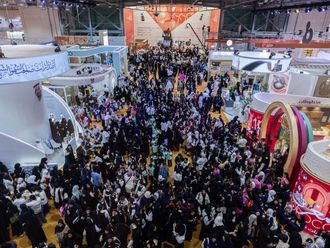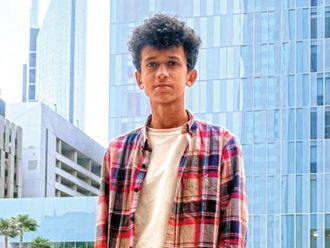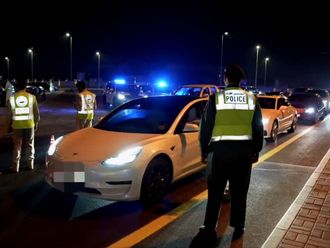Hunted by the U.S., followed by an army of informers and the target of a satellite permanently focused on Afghanistan, this is a man on the run. Osama bin Laden's role as a man who became pivotal to the Taliban began in the late Nineties when he returned to his former hunting grounds – Afghanistan – where he had fought the Soviets.
Bin Laden, suspected of masterminding the terrorist strikes in New York and Washington, only arrived in Afghanistan, where he had fought the jihad against Soviet occupation in the Eighties, on May 18, 1996, when he found he was no longer welcome in President Omar Al Bashir's Sudan.
He had lived for five and a half years in Sudan and made significant investments in that country until then.
His first point of arrival was Jalalabad in eastern Afghanistan. He arrived with his family and supporters and took refuge with an Afghan mujahideen commander named Engineer Mahmood whom he knew from the days of the Afghan jihad.
Bin Laden had fought for about 10 years in the jihad against the Soviet occupation troops in Afghanistan and left sometime after the withdrawal of the Red Army in 1989 He left Afghanistan, troubled and angered by the perennial infighting among the different Afghan mujahideen groups. On a number of occasions he had unsuccessfully tried to mediate between them.
Soon after his return to Jalalabad, the city fell to the Taliban on September 12, 1996.
Subsequently on September 27, the Taliban captured Kabul after driving out then president Burhanuddin Rabbani and his defence minister Ahmad Shah Masood.
Initially, the Taliban were suspicious and wary of bin Laden because the former thought the Saudi-born militant had until then backed their rivals led by Rabbani and Masood. It took a few meetings between bin Laden and Taliban emissary Mulla Mohammad Sadiq to remove these misgivings.
Later, the Taliban asked bin Laden to shift to Kandahar, the spiritual capital of the Taliban Islamic Movement and the headquarters of their supreme leader Mulla Mohammad Omar.
Bin Laden 's wives, stated to be four in number, and his several children lived in Kandahar until a few days ago and have now been shifted to the countryside to avoid harm in case of a U.S. attack.
As for bin Laden, he keeps shifting homes, moving from one among over half a dozen hideouts, including Khost which was attacked by the U.S. with Cruise missiles on August 20, 1998. Other hideouts are said to be near Kandahar and in Urozgan as well as Nimruz, Logar, Kabul and Nangarhar provinces.
Bin Laden has always been keen to talk to the media so that he could convey his message and advance his political agenda. He also felt the need to clarify his position because of frequent accusations against him for his involvement in acts of terrorism all over the world.
His first interview after returning to Afghanistan in 1996 was with Robert Fisk of The Independent, London. In that interview, he announced his return to Afghanistan and demanded the pullout of U.S., British and French troops from Saudi Arabia.
It was in 1998 that his name started to figure more and more as a paymaster to radical religious groups in a number of countries.
That year, his stature was enhanced as the Western media sought his interviews and the CNN and ABC crews travelled to Jalalabad to talk to him.
He also held a press conference for Pakistani journalists in Khost on May 25, 1998 and announced the launching of the International Islamic Front for Jihad against the Christians and Jews, or as he explained – against the U.S. and Israel.
The bombings of the U.S. embassies in Nairobi (Kenya) and Dar es Salam (Tanzania) on August 7, 1998 forever changed his image.
The U.S. held him responsible for the terrorist attacks and then President Bill Clinton described him as public enemy number one of America.
Twelve days later, the U.S. fired about 80 Tomahawk Cruise missiles from a ship to hit his training camps in Khost, southern Afghanistan.
Contrary to U.S. intelligence reports, bin Laden was not in the camp and no big meeting of his followers was planned that night. Four Arabs and one Tajik follower of bin Laden and over 25 Afghans, Pakistanis and Kashmiris were killed in the attack.
The majority of those killed were innocent Afghan villagers. The camp suffered some damage due to accurate Cruise missile hits but its infrastructure remained intact. The camps were neither hi-tech as claimed nor equipped with modern communication facilities.
Bin Laden gave his last interview, which incidentally was conducted by this writer, on December 23, 1998.
Since then, he has not granted any interview because the Taliban do not allow him to speak. Bin Laden does not want to offend the Taliban because he needs to stay in Afghanistan for lack of other options.
When he gave his famous press conference on May 25, 1998 in Khost without Taliban permission, their leader Mulla Omar was furious. It was on that occasion that Mulla Omar remarked that there could be only one ruler in Afghanistan, either him or bin Laden.
This prompted bin Laden to publicly proclaim that he considered Mulla Omar as the Amirul Momineen (Commander of the Faithful) and would support every policy of his government.
The Taliban have claimed since that they monitor and curtail bin Laden's movements. They also insist that they have taken away his satellite phone, fax machine and other modern communication gadgets to deny him access to his followers elsewhere in the world.
Even now the Taliban say that bin Laden has no phone or fax and is, therefore, cut off from rest of the world. However, what has not been spelt out is the possibility that bin Laden's Arab followers in Afghanistan have some access to phones, faxes and computers.
Bin Laden himself has abided by the Taliban ban on granting media interviews since December 1998. But he has tried to circumvent these restrictions by preparing his own audio and video cassettes and sending them out to a select group of Muslim scholars, politicians and the media.
The first such videos came out in February this year and it contained footage of the wedding of his eldest son, Mohammad. The boy married the daughter of Sheikh Taseer Abdullah, whom U.S. authorities refer to as Mohammad Atef and is reported to be bin Laden's military commander.
Bin Laden introduced him as his right hand man during his May 1998 press conference in Khost. As with bin Laden, the U.S. government has announced a reward of five million dollars for information that could lead to Atef's capture.
Other videos that have reportedly come out of bin Laden's camp in Afghanistan include one in which he is shown making a speech to his men in a room and his younger son reciting a poem that praises the Palestinian intifada (uprising) against Israel.
The authenticity of the videos containing military training by bin Laden's men or those in which he is said to have praised the attack on U.S.S. Cole have not been established.
In fact, a number of p
Osama bin Laden: The man and his cause
Hunted by the U.S., followed by an army of informers and the target of a satellite permanently focused on Afghanistan, this is a man on the run.












